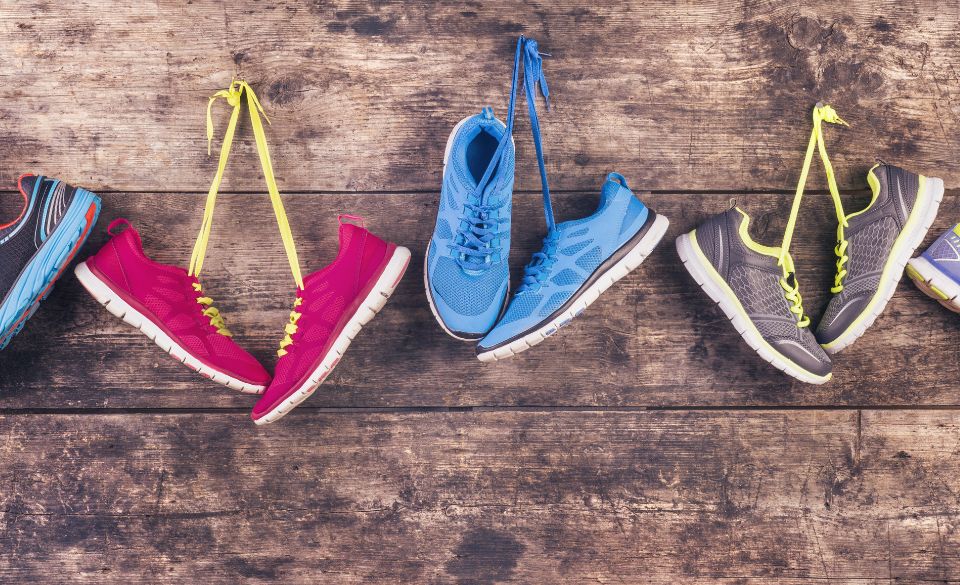
How to Rotate Running Shoes: A Guide to Maximize Your Footwear’s Lifespan
Page Contents
As a runner, investing in a quality pair of running shoes is essential to prevent injuries and improve performance. However, even the best shoes can break down over time, especially if they’re not properly taken care of. That’s where shoe rotation comes in. By rotating your running shoes, you can extend their lifespan and ensure they continue to provide the necessary support and cushioning your feet need. In this article, we’ll explore the benefits of shoe rotation and provide some tips on how to do it effectively.
Why Should You Rotate Your Running Shoes?
Wearing the same pair of running shoes for every workout can lead to a number of issues. For one, the constant impact and wear and tear can cause the cushioning to break down faster, which can lead to discomfort and even injury. Additionally, wearing the same shoes repeatedly can cause them to develop a particular wear pattern that can be difficult to correct. This can affect your gait and lead to imbalances and overuse injuries.
Rotating your running shoes helps to mitigate these issues. By alternating between multiple pairs, you can reduce the amount of wear and tear on any given pair of shoes. This, in turn, can help to prolong their lifespan and ensure they continue to provide the necessary support and cushioning. Additionally, rotating shoes can help to prevent imbalances and overuse injuries by ensuring your feet aren’t constantly exposed to the same pressure points.
How Often Should You Rotate Your Running Shoes?
The frequency at which you rotate your running shoes will depend on a few factors, including the intensity and frequency of your workouts, your running gait, and the type of shoes you wear. As a general rule, it’s recommended that you rotate your shoes every 300-500 miles. For a regular runner, this means rotating shoes every three to six months.
However, if you’re a heavier runner or you frequently engage in high-intensity workouts, you may need to rotate your shoes more frequently. Likewise, if you notice any signs of wear or discomfort in your shoes, you should rotate them immediately.
How to Rotate Your Running Shoes
Rotating your running shoes is a relatively straightforward process. Here are a few tips to help you get started:
Start with two pairs of shoes: To rotate your shoes effectively, you’ll need at least two pairs of running shoes. Ideally, these shoes should be of a similar style and offer similar levels of support and cushioning.
Alternate between shoes: To ensure you’re getting the maximum benefits from shoe rotation, it’s important to alternate between shoes regularly. This can mean using one pair of shoes for one workout and then switching to the other pair for the next workout.
Monitor wear and tear: As you rotate your shoes, it’s important to monitor them for signs of wear and tear. Look for any signs of uneven wear, such as worn-out treads or holes in the soles. If you notice any significant damage, it’s time to replace your shoes.
Keep track of mileage: Finally, it’s a good idea to keep track of the mileage you put on each pair of shoes. This can help you to determine when it’s time to rotate or replace them.
Studies on Shoe Rotation
Several studies have explored the benefits of shoe rotation for runners. One study published in the Journal of Orthopaedic & Sports Physical Therapy found that runners who alternated between two pairs of shoes experienced less pain and were less likely to sustain a running-related injury than those who used only one pair of shoes. Another study published in the British Journal of Sports Medicine found that runners who rotated between three pairs of shoes had a lower risk of injury than those who used only one or two pairs.
In conclusion, rotating your running shoes is an effective way to extend their lifespan and improve your overall running experience. By alternating between multiple pairs of shoes, you can reduce wear and tear on any given pair, prevent imbalances and overuse injuries, and ensure your shoes continue to provide the necessary support and cushioning. To rotate your shoes effectively, it’s important to alternate between them regularly, monitor them for signs of wear and tear, and keep track of the mileage you put on each pair. By following these tips, you can get the most out of your running shoes and enjoy a more comfortable and injury-free running experience.
Overall, shoe rotation is a simple and effective way to get more out of your running shoes. By investing in multiple pairs of shoes and alternating between them regularly, you can reduce the risk of injury, extend the lifespan of your shoes, and enjoy a more comfortable and efficient running experience. So, whether you’re a casual jogger or a serious marathon runner, consider incorporating shoe rotation into your training routine and see the difference it can make.




